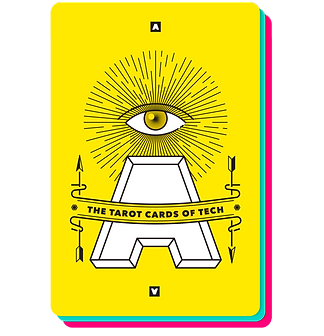Role: Product Designer
Timeline: 10 Weeks
Tools: Figma, Photoshop, Google Meet
Platform: Android
Overview: People, especially individuals with ADHD, often face challenges aligning their goals with their lifestyle. To address this, I developed an innovative app that empowers users to visualize and prioritize three crucial life categories: personal, relationships, and work. Within each category, users can select from a diverse range of writing prompts, enabling them to create, remember, and actively maintain their goals. This app offers a user-friendly interface and aims to support individuals in achieving their objectives effectively.
ReMindMe App




I chose to use the Double Diamond method for my project of designing an app to help individuals with ADHD set and maintain sustainable goals because it provides a structured approach to human-centered design.
Starting with user research, I conducted interviews, surveys, and secondary research to gain insights into the needs and challenges faced by individuals with ADHD. Using these insights, I developed user personas and identified key goals for the project. During the development phase, I generated a wide range of ideas, sketches, and prototypes to address these goals, refining and testing the most promising solutions with users. The Double Diamond method allowed me to ideate and create an effective and user-friendly app that empowers individuals with ADHD to set sustainable goals with greater ease and success.
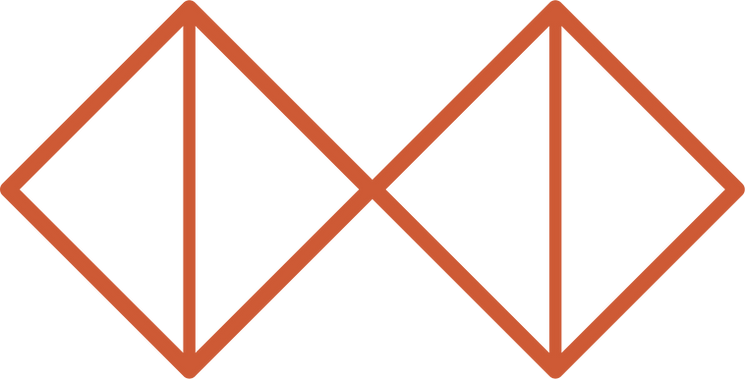
Problem Space
The aim is to improve the overall quality of life for adults with ADHD with the problem space focusing on adults with ADHD facing difficulties that lead to issues with memory, organization, and productivity impacting daily life and causing stress and frustration.
My secondary research revealed that
8.8 million adults with ADHD face challenges that affect their memory, productivity, and organization, leading to frustration and stress.
8.8
million adults
User Interviews
My hypothesis was that adults with ADHD struggle with their overall quality of life due to issues with memory and organization. This led me to assume that the #1 value the user would gain from my product is reducing stress related to ADHD symptoms.
This helped form the questions I made when conducting user interviews, I aimed to validate or refute this hypothesis and gain insights into the specific pain points, motivations, and behaviours.
= Pain Points
= Behaviours
= Motivations
Key Research Insights
Through affinity mapping my user interviews, I uncovered my key theme of memory issues.
Legend
= Pain Points
= Behaviours
“Memory and task management has been a challenge in daily life.”
“I have a really hard time delegating tasks and time slots
to myself.”
“I remind myself to remember something when I think I'm gonna forget and I'll end up forgetting anyways.”
“I had all these notes saying like, don't forget, don't forget, so that sucks when that happens.”
Persona
During my user research, I discovered that many users struggled with memory issues, which I incorporated into my persona development. This is particularly evident in James' pain points, as he finds basic reminders ineffective and struggles to remember to complete tasks on time.


The pivot in this project involved narrowing the focus from a broad How Might We question to a specific issue of memory issues and goal maintenance for adults with ADHD.
This shift was driven by insights gained from user interviews, which highlighted the prevalence of memory issues and the need for an easy way to notify users of their goals. By focusing on this specific challenge, the project was able to create a more targeted and effective design solution that addressed the unique needs and challenges of its users.
This pivot was beneficial because it transformed our app into more than just another notes or goal tracker. By addressing a specific user's priorities, we were able to provide a solution that was missing in existing goal management tools.
Revised How Might We
How might we help adults with ADHD in Canada and the USA set and maintain sustainable goals in order to avoid burnout?
Revised HMW...
How might we help adults with ADHD in Canada and the USA find ways to improve memory and organization, leading to improved productivity, reduced stress, and an enhanced overall quality of life?
Old HMW...
User Stories & Epics
By creating user stories based on my persona as an adult with ADHD, we were able to establish 3 epics.
Our core epic focused on goal setting and scheduling based on prompts.
Goal Setting Based on Prompts
Discovering and Maintaining Hobbies
Setting and Receiving Reminders

Task Flow
Based on our user stories and core epic I was able to create a task flow based on the user story:
as an adult with ADHD I want to set goals based on different prompts so that I can remember and think of new areas I might want to set goals for.

Sketches & Wireframes
I started the design process with exploratory and solution sketches, which helped me generate ideas. From there, I selected the most promising designs and refined them into wireframes. During this process, I identified areas for improvement and iterated on the design to enhance usability and optimize the user flow. My focus was on simplifying the layout and eliminating unnecessary elements to create a streamlined and intuitive experience.
ExploratorySketches
Wireframes



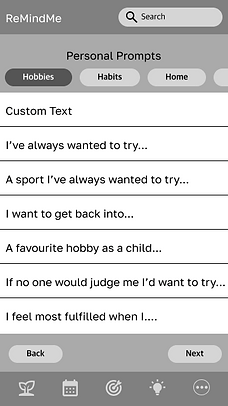

Usability Testing
ReMindMe underwent two rounds of user testing with a total of five users, all matching the ideal user profile of adults with ADHD located in Canada or the USA. The testing aimed to gather feedback to improve the design and user experience. The feedback received highlighted the need for a process indicator bar, clearer screen prompt phrasing, and an all-in-one scheduling and notification system for seamless goal-setting and reminder-receiving.

Visual Identity Story
After conducting usability testing and making changes to my wireframes, I proceeded to create a mood board, color palette, type scale, and key components. I opted for a neo-brutalist design because it offers a simple and minimalist approach to engage users while providing information in an accessible and easily digestible manner.
I made these design choices with the user in mind since I understood that adults with ADHD face challenges in feeling stimulated enough and can be easily overwhelmed with text and information. Therefore,
I had to ensure that the design was balanced in addressing these issues.
Colour Palette


Wordmark

App Icon for Android
Low-Fi - Hi-Fi
My wireframes went through several iterations, from version 1 to version 3, with significant changes made based on user testing feedback. These changes included
-
adding labels to the navigation menu
-
incorporating a progress bar during app setup
-
making the garden section a more realistic rectangular shape
Before

Before
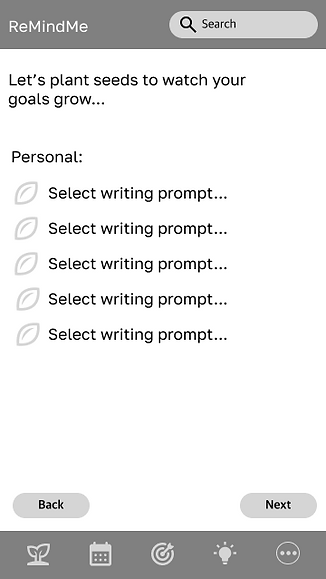
After
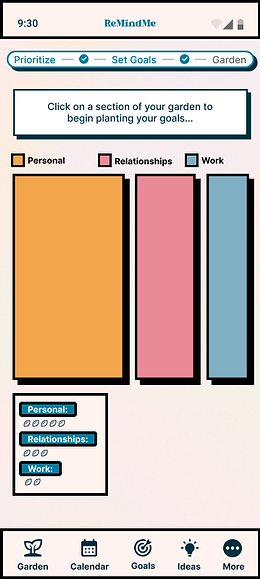
After

Hi-Fi Mockup

Responsive Product Marketing Site
After finishing the hi-fi design of the ReMindMe app, I created a responsive website that works well on desktop and mobile devices. The website features essential elements such as download buttons, hero sections, features, reviews, calls to action (CTA), and a footer.


Key Learnings
1
Be open to new solutions to find the most effective design
2
Narrow focus to better meet user needs and goals
3
Embrace the challenge of pivoting to achieve a better design outcome
4
Value ideation and exploration of multiple design options for the best solution
Measuring Success
To evaluate the success of the ReMindMe app, we will use the following metrics:
-
Number of users who set and maintain their goals over time, obtained through user feedback surveys, interviews, and in-app analytics.
-
Assessment of the app's impact on burnout, measured by changes in user-reported stress levels before and after using the app.
-
Number of downloads, active users, and user ratings on app stores. These metrics will help us determine the overall adoption and user satisfaction of the app.
Future Considerations
Future considerations for improving the design solution for adults with ADHD include incorporating gamification elements, personalized integrations, ongoing user testing and feedback, and potential partnerships with mental health professionals or ADHD support groups.
The tarot cards of tech can be used to iterate on the design and identify areas for improvement. These enhancements will help to increase engagement, enhance the user experience, and raise awareness and adoption of the app within the target user group.
